#dicentra canadensis
Text

Squirrel Corn
Dicentra canadensis
This spring ephemeral is scattered throughout the eastern United States, but it is somewhat rare in Missouri.
April 17th, 2023
Washington County, Missouri, USA
Olivia R. Myers
💕
@oliviarosaline
#botany#Dicentra canadensis#dicentra#papaveraceae#nature#woods#forest#forest floor#forests#bleeding hearts#flowers#plants#native plants#native flowers#wildflowers#The Ozarks#ozarks#Missouri#Missouri nature#heart shaped#hearts#fairycore#cottagecore#naturecore#forestcore#exploring#hiking#plant photography#nature photography#exploring nature
12 notes
·
View notes
Text

Squirrel Corn (Dicentra canadensis) is another spring ephemeral native to the Great Lakes! This lovely specimen was photographed just south of Georgian Bay in Ontario.
These little guys look a LOT more like the traditional Bleeding Heart than their close (both species-wise and location-wise) relative Dutchman's Breeches. They don't get their name from any part of the flower however, and instead are named for their bulbs, which are yellow and divided. They roughly look like kernels of corn and, if you are familliar with squirrels and their taste for tulips, are an easy snack for small forest mammals.
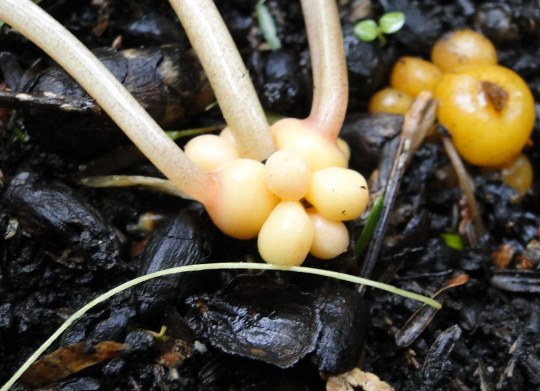
#submission#squirrel corn#dicentra canadensis#very cool!#I'm more familiar with the PNW bleeding heart and dutchman's breeches
38 notes
·
View notes
Text

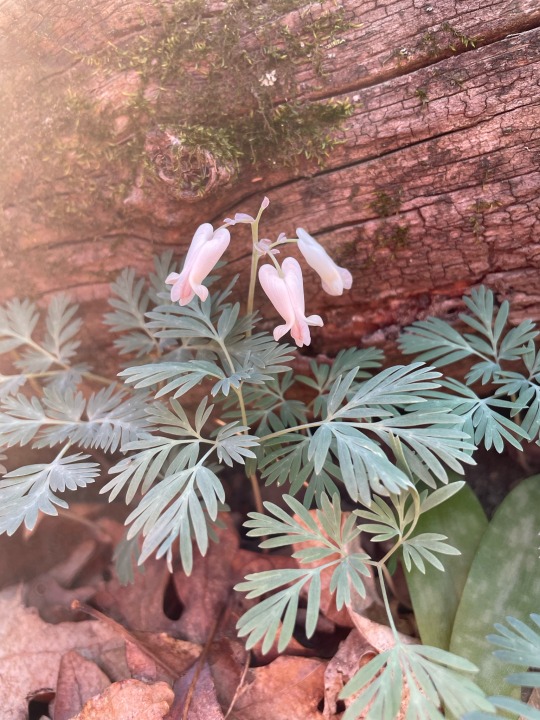
As @kihaku-gato pointed out, the plant on the right that I posted earlier is actually Dicentra canadensis - but upon reviewing my photos, I actually ALSO ran into Dicentra cucullaria! So here’s a fun comparison of the two! Now that I see them both directly next to each other, they’re pretty different.
24 notes
·
View notes
Text
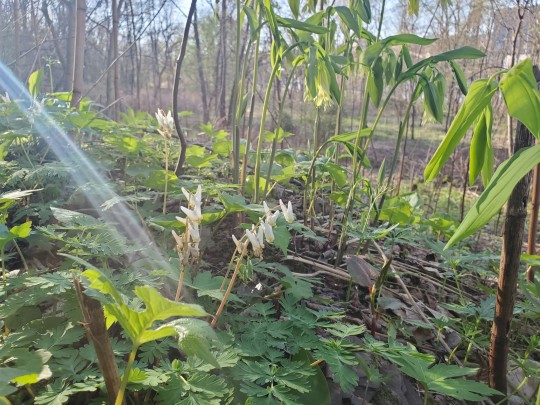
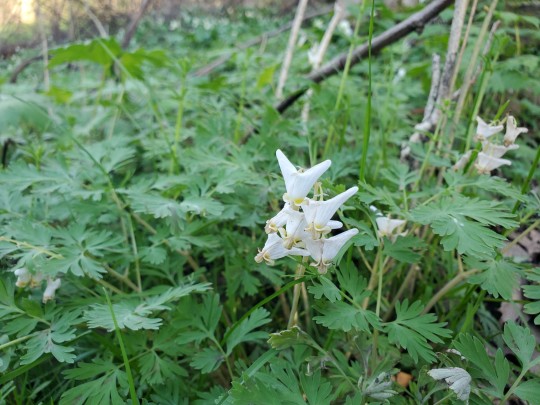

Dicentra canadensis and Dicentra cucullaria at Barking Slopes Conservation Area in New Kensington, PA.
These were all over the entire wooded hillside trail, mixed with Trilliums and other wildflowers. Their common names are fun as well. The first is Squirrel Corn and the other Dutchman's Britches.
36 notes
·
View notes
Text
LIST OF ENDANGERED PLANTS
(This is a list of common herbs in witchcraft that are endangered)

CRITICALLY ENDANGERED:
Elephant Tree – Bursera microphylla
False Unicorn – Chamaelirium luteum
Lady’s Slipper Orchid – Cypripedium spp.
Peyote – Lophophora williamsii
Sandalwood – Santalum spp. (Hawaii only)
Sundew – Drosera spp.
Trillium, Beth Root – Trillium spp.
Venus Fly Trap – Dionaea muscipula
AT RISK:
American Ginseng – Panax quinquefolius
Black Cohosh – Actaea racemosa
Bloodroot – Sanguinaria canadensis
Blue Cohosh – Caulophyllum thalictroides
Butterfly Weed – Asclepias tuberosa
Cascara Sagrada – Frangula purshiana
Chaparro – Castela emoryi
Echinacea – Echinacea spp.
Gentian – Gentiana spp.
Goldenseal – Hydrastis canadensis
Goldthread – Coptis spp.
Kava – Piper methysticum (Hawaii only)
Lomatium – Lomatium dissectum
Maidenhair Fern – Adiantum pedatum
Mayapple – Podophyllum peltatum
Oregon Root – Berberis spp.
Osha – Ligusticum porteri
Palo Santo - Bursera graveolens
Partridge Berry – Mitchella repens
Pink Root – Spigelia marilandica
Pipsissewa – Chimaphila umbellata
Ramps – Allium tricoccum
Slippery Elm – Ulmus rubra
Squirrel Corn – Dicentra canadensis
Stone Root – Collinsonia canadensis
Stream Orchid – Epipactis gigantea
True Unicorn – Aletris farinosa
Virginia Snakeroot – Aristolochia serpentaria
White Sage – Salvia apiana
Wild Indigo – Baptisia tinctoria
Wild Yam – Dioscorea villosa
Yerba Mansa – Anemopsis californica
"IN REVIEW"
Arnica – Arnica spp.
Chaga – Inonotus obliquus
Eyebright – Euphrasia spp.
Ghost Pipe – Monotropa uniflora
Lobelia – Lobelia inflata
Skunk Cabbage – Symplocarpus foetidus
Solomon’s Seal – Polygonatum biflorum
Wild Cherry – Prunus serotina
(source)
But Grimsley, what ever else will I use?
ALTERNATIVES
(these are just suggestions)
Rosemary (you can get it in a stick like sage)
Lavender
Dried flowers like Roses, Hibiscus, Jasmine, Chrysanthemum, Chamomile, Marigolds, Cornflower, Peony
Rose Hips
Incense (there's a wide variety and easy to make yourself, may be more potent than white sage alone so i would use incense. all you need is makko powder and essential oils and a stick to wrap it all up in)
Essential oils
Black Salt
White Salt
Mugwort
White Willow Bark
Acorns
Cinnamon Sticks
really it all comes down to what you correspond what to what. rosemary can almost totally replace white sage. lets leave the sacred herbs to who they actually belong to.
17 notes
·
View notes
Note
Good morning!
I was wondering if you knew the magical properties and uses of Bloodroot (Sanguiarua canadensis) and Dutchmans breeches (Dicentra cucullaria). I've had an attraction to both since I was little.
I know Bloodroot can be used for dyeing and some forms of love magick, but I was wondering if you knew of any other properties of the plant?
I know that, traditionally, Bloodroot has been used for magic having to do with love and relationships, as you said. However, it has also traditionally been used in magic that aims to protect the home and family. Extroplating a bit further, I believe that it would make a suitable additive in magic that specifically aims to ward off spirits that draw their power and sustence by sowing discontent and enmity amongst friends, lovers, and family members.
As for Dutchman's Britches (as I learned to call them), I believe there is a traditional belief amongst certain indigenous North American tribes that it can be used in love-drawing magic. Beyond that, I'm not aware of other folklore surrounding them, but I have come to develop my own beliefs through experience. In particular, this plant (and all other members of the Bleeding-Hearts genus) is one beloved by the Fae. Like most things held dear by the Folk, it can be used in two paradoxical ways. On one hand, it can be used to appease or even lure Fae Spirits. On the other hand, however, it can also be used to ward against Fae Spirits when properly employed.
7 notes
·
View notes
Text

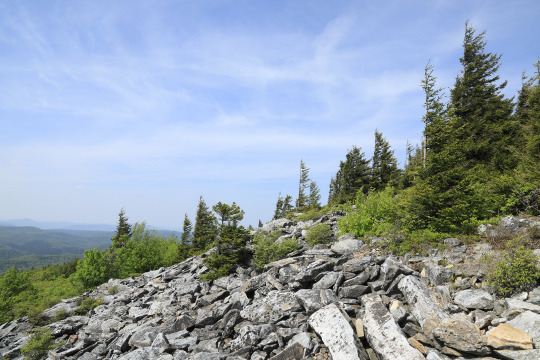
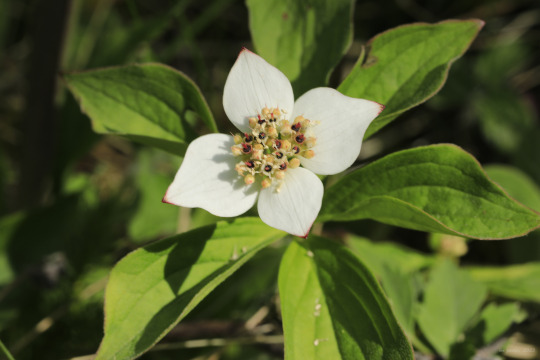
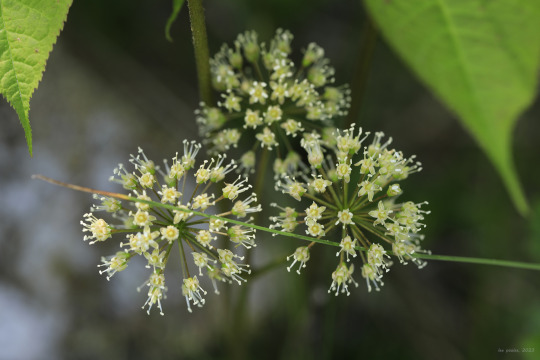
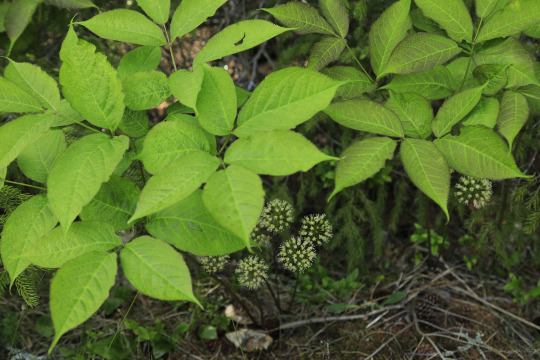
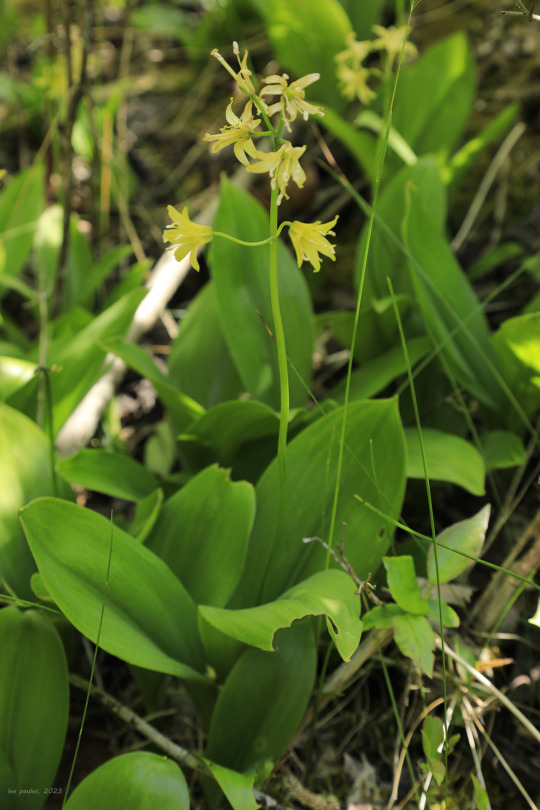
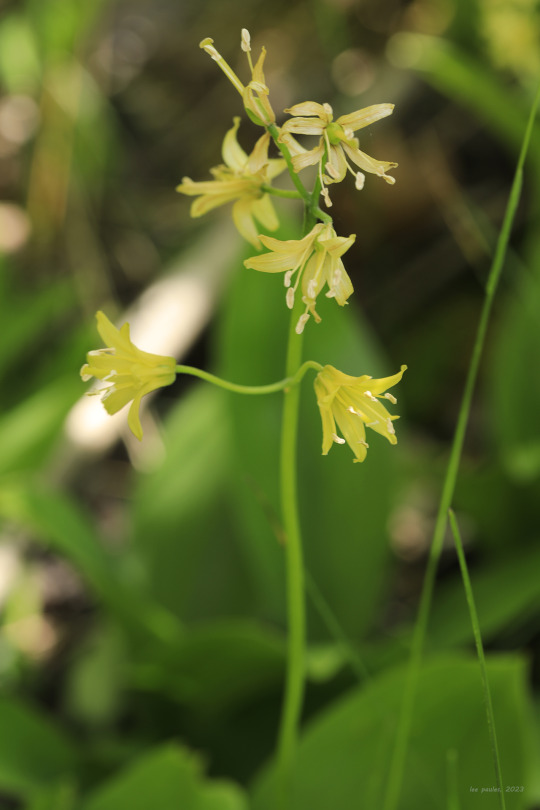
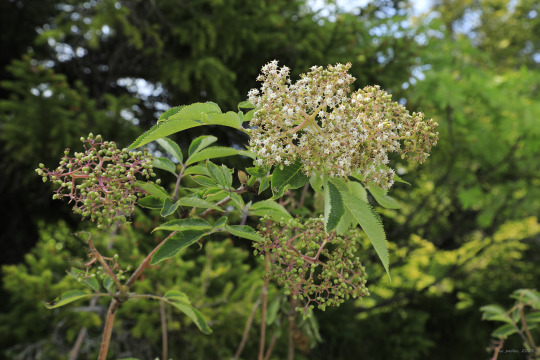
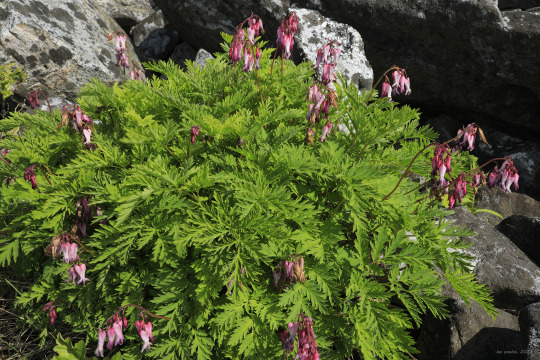



Day Date at Spruce Knob-Seneca Rocks National Recreation Area, Part 2. Gorgeous late spring day on the summit of Spruce Knob.
From top: View from the main overlook toward North Fork Mountain; flagged red spruce and broken Pottsville sandstone on the western-facing slope of the mountain; a close-up of a bunchberry (Cornus canadensis) "flower", characterized by four white bracts surrounding a mound of true, white to purplish flowers that will soon be replaced by edible, bright red berries; the ball-shaped, greenish-white flowers of wild sarsaparilla (Aralia nudicaulis), which cluster under the plant's umbrella-like leaves; the elegant yellow flower stalk of yellow Clintonia (Clintonia borealis), also known as bluebead lily for the porcelain blue berries that follow the flowers in late summer; a late-flowering red elderberry (Sambucus racemosa var. racemosa), also known as red-berried elder and scarlet elder, typically one of the first plants to bloom in Appalachia's higher elevations; fringed bleeding heart (Dicentra eximia), also known as turkey corn, a gorgeous perennial wildflower of Appalachia's higher mountains, much loved for its extended bloom time from spring through fall; and early azalea (Rhododendron prinophyllum), also known as roseshell azalea, a tall, hardy shrub that loves the acidic soil of the Appalachian highlands.
#appalachia#vandalia#west virginia#wildflowers#spring#flora#allegheny mountains#monongahela national forest#spruce knob#spruce mountain#bunchberry#canadian dwarf cornel#creeping dogwood#wild sarsaparilla#false sarsaparilla#yellow clintonia#bluebead lily#red elderberry#red-berried elder#scarlet elder#fringed bleeding heart#turkey corn#early azalea#roseshell azalea
35 notes
·
View notes
Note
Trick or treat!!🌱
TREAT!!!!

Squirrel corn ( Dicentra canadensis ) is a funny name for a very cute little spring wildflower! They're in the same family as bleeding hearts.
Added bonus: Thats my picture! I took that lol
4 notes
·
View notes
Text
Native Plants in Canada and Nurseries that Carry Them
Time to open my first box of new plants this year! :D
For those who would like to buy native plants for your own garden, check out the USDA site, which will show you what regions a given plant species is native to. I use it often when I find a species I’m curious about and have added many plants to my personal wishlist this way.
Just use the “basic search” on the right. Keep in mind though that the spelling of the species name has to be exact or no results will come up. Sometimes there’s disagreement on whether a species name ends in “us” “a” “is” or “um” so I sometimes just search for the genus name and go through the list that comes up to find the species.
These are the places I order from (I am in Ontario, but many of them ship elsewhere in Canada):
ALCLA Native Plants - First time ordering! They’re in Alberta but will ship elsewhere and carry a wide selection of plants, a number of which include Ontario in their natural range as well as Alberta, and some of which I haven’t found available anywhere else.
Bamboo Plants - They’re in Ontario but will ship elsewhere. They do not specialize in native plants but they do carry a number, including things like squashberry (Viburnum edule), which is very difficult to find anywhere else.
Botanus - They’re in British Columbia but will ship elsewhere. They do not specialize in native plants but they carry a few species and the ones I got were healthy. Worth giving a try.
Connon Nursery - They don’t ship, but they do have several locations in Ontario and possibly elsewhere. They don’t specialize in native plants but they do carry a large number of them. Definitely worth checking out if you drive or can get a ride.
Hidden Habitat - They don’t ship anymore, but do local delivery in their area of Ontario and offer pickups. They’re about an hour and 45 minutes away from Toronto so if you live in the GTA and can get a ride, it would be worth checking out. They have witch’s hobblebush (Viburnum lantanoides) and partridgeberry (Mitchella repens), which are hard to find anywhere else.
Hortico - First time ordering! They ship across Canada as far as I know. They don’t specialize in native plants but have a huge selection, including some that are hard to find elsewhere, such as squirrel corn (Dicentra canadensis) and fairy spuds (Claytonia virginica).
Lacewing - First time ordering! Located in the GTA. They don’t ship, sadly but if you live close to the GTA maybe you can get a ride over. So far they’re the only nursery I’ve been able to find that carries horseflyweed (Baptisia tinctoria).
Native Plants in Claremont - They only ship in multiples of 6 (and I think only in Ontario) and the plant selection they offer for that isn’t huge (but definitely worth looking at if you’re just starting out). However, their location isn’t terribly far from Toronto, so if you can get a ride out there, the selection is much wider and includes some hard to find species.
Native Plant Nurseries - First time ordering! They’ll deliver within the GTA with a minimum order between $50 and $75 (not hard to reach if you’re really trying to fill a space) and a delivery fee as well. It’s possibly less if you’re closer to their location. Very nice selection and some hard to find species such as white lettuce (Nabalus alba) and purple prairie clover (Dalea purpurea).
North American Native Plant Society - First time ordering! They have a few locations and each location as I understand it has a single day to pick up in the spring. If you become a member you can pre-order plants that you pick up that day as well. They have a large number of species, some which are very hard to find, and if you become a member they offer seed exchanges.
Nutcracker Nursery - They’re in Quebec but ship elsewhere. They carry trees and bushes which they ship bare root wrapped in clay and paper for moisture. They don’t specialize in native plants, but carry a number and are thus far the only nursery I know of that carries native burning bush (Euonymus atropurpureus). Your standard burning bush (Euonymus alatus) found in most garden centres is not native and is invasive in some areas, which makes getting my hands on E. atropurpureus a priority for me, but sadly it’s not available yet this year. Hopefully soon though!
Ontario Native Plants - They only ship in Ontario, and only in multiples of 4. They have a nice selection and every year they try out a new and hard to find species. If you’re looking for appearance and aren’t specializing in edibility, I would highly recommend their new rock harlequin (Corydalis sempervirens).
Origin Native Plants - First time ordering! They’re in Ontario, not sure if they ship elsewhere. I think their minimum is 10 plants. They have a number of hard to find species, including Canada lily (Lilium canadense), wild yam (Dioscorea villosa/quaternata), and wild basil (Clinopodium vulgare).
Paramount Nursery - They have locations in Toronto, Ottawa, and Montreal, so if you live close to any of these areas you can get a free delivery with a $100 minimum order. They don’t specialize in native plants but carry a large number, including Canada buffalo berry (Shepherdia canadensis), and bog rosemary (Andromeda polifolia).
Phoenix Perennials - They’re in British Columbia but ship Canada-wide as far as I know. They don’t specialize in native plants but have a large number, including some extremely hard to find species such as green dragon (Arisaema dracontium). They ship potted plants that they feel have grown hardy enough to survive a long trip, but there’s a greater chance of plant damage.
Prairie Originals - They’re in Manitoba and will ship elsewhere but not every year (sadly not this year). They specialize in plants native to Manitoba but many of these are native to Ontario as well. They carry a wide selection, and yes that includes some that are hard to find anywhere else.
The Pond Experts - First time ordering! They ship Canada-wide as far as I know. They don’t specialize in native plants but carry some native species, several of which are very difficult to find elsewhere, such as pickerelweed (Pontederia cordata) and duck potato (Sagittaria latifolia). As many of the plants they carry are marginal plants rather than floating ones, you don’t need a pond for them, just make sure the area you put them in has poor drainage and isn’t shielded from rain. And water them extra when watering your garden. If possible, put them next to the downspout of the eavestrough.
Wild About Flowers - They’re in Alberta but ship Canada-wide as far as I know. They specialize in plants native to Alberta but many of these are native to Ontario as well. Their minimum is 8 plugs, and they’re also teamed up with Wright Nursery which is more trees and bushes and requires a minimum of 8 plugs as well.
For shipped plants, please don’t hold it against the nursery if some of them don’t make it through the journey. They’re all trying their best to make sure you get plants that will survive in your garden:
Bare root bushes are easier to stack in a long box which reduces chance of damage. It’s also very easy to dig a hole to plant them in and there’s no chance of them being root-bound. If, however, they run out of moisture on the way, they might not make it. Alternatively, being packed in clay and paper they might develop mould, which will kill them.
Plugs are extremely easy to plant, especially if you want to plant in a small space. They’re young that being mildly root bound won’t be a huge problem. They’re unlikely to be damaged in transit. However, because they’re so young and in such a small amount of soil, they can run out of moisture quickly, or perish without the sunlight. It’s also easier to mix up the species. For example, young goldenrods and asters can look very similar.
Potted plants have begun to establish themselves and so are much better able to handle a couple days without water or a week without sunlight. However, there’s a non-zero chance they’ll be extremely root-bound, which may kill them even after you’ve planted them. And it’s easier for them to get damaged in transit.
As you can see, there are benefits and drawbacks to each method, and this is reason some nurseries won’t ship live plants at all. I for one, not having a car, am grateful for those that do.
Now...to find out what’s in my box (from Hortico)!
#native North American species#native Canadian plants#native Ontario plant species#native Canadian plant nurseries#list of nurseries selling native Ontario plants#gardening#native garden
25 notes
·
View notes
Text
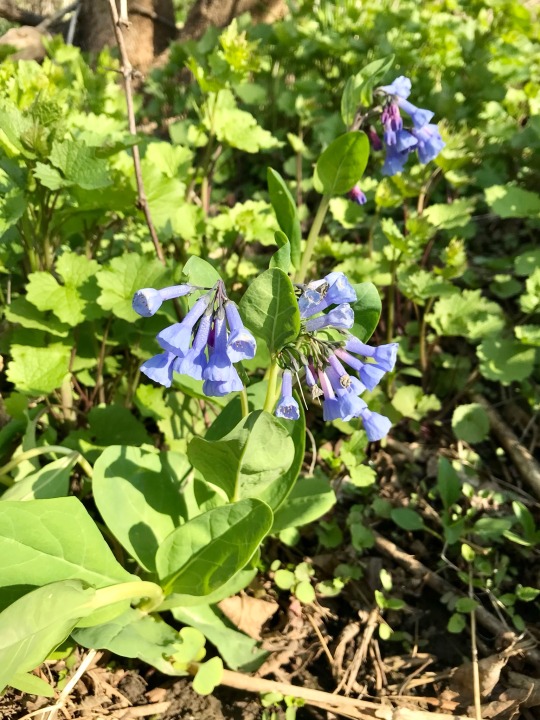
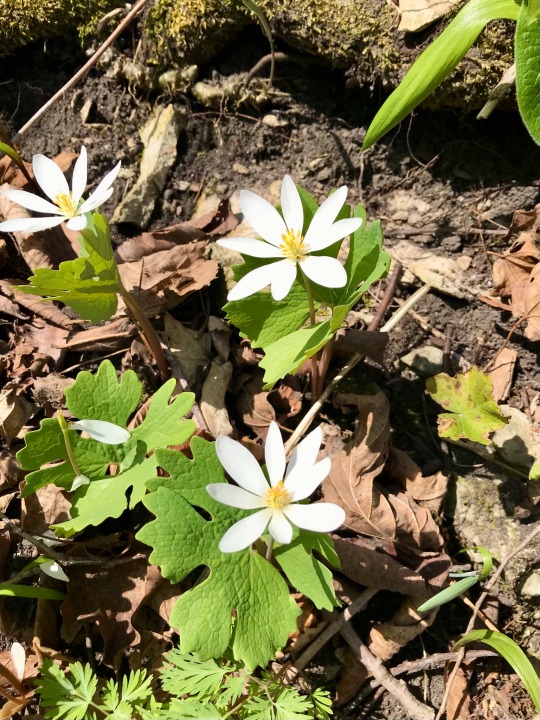
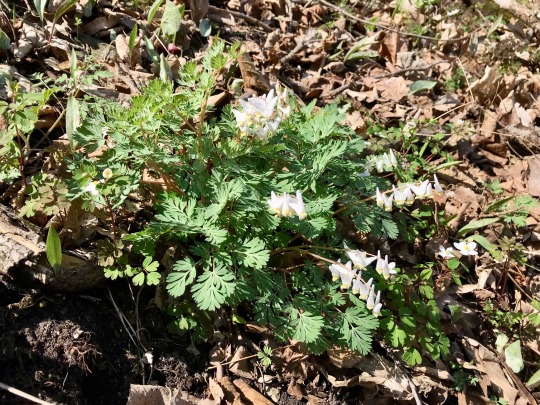
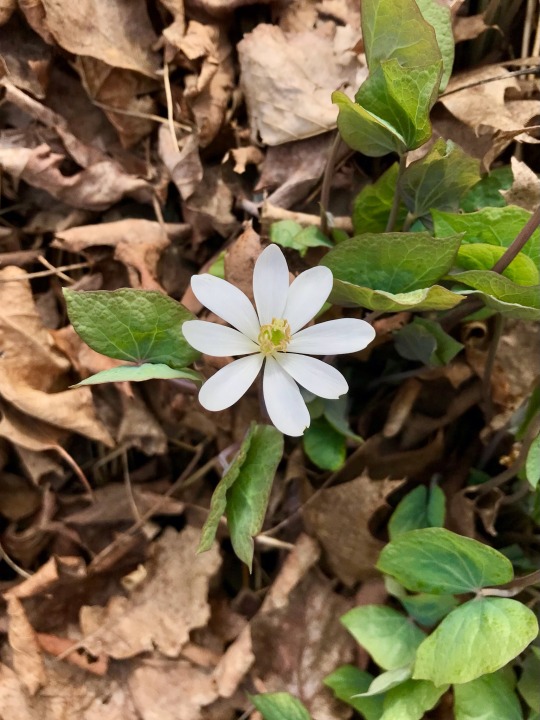
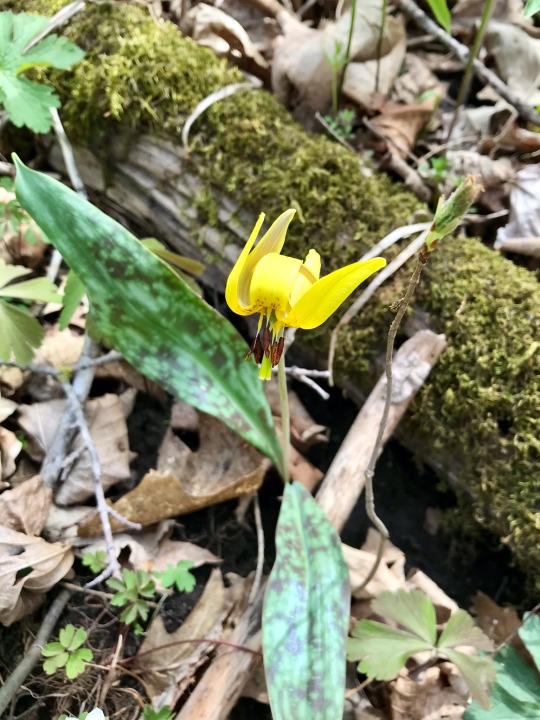
Virginia Bluebells (Mertensia virginica), Bloodroot (Sanguinaria canadensis), Dutchman’s Breeches (Dicentra cucullaria), Twinleaf (Jeffersonia diphylla), Yellow Trout-lily (Erythronium americanum)
Olmsted & Winona Counties, Minnesota
1 note
·
View note
Text

Squirrel Corn
Dicentra canadensis
Cherokee Park, KY
3 April 2021
#squirrel corn#dicentra canadensis#wildflower#spring ephemeral#original photographers#photographers on tumblr#imiging#bird photography
16 notes
·
View notes
Photo
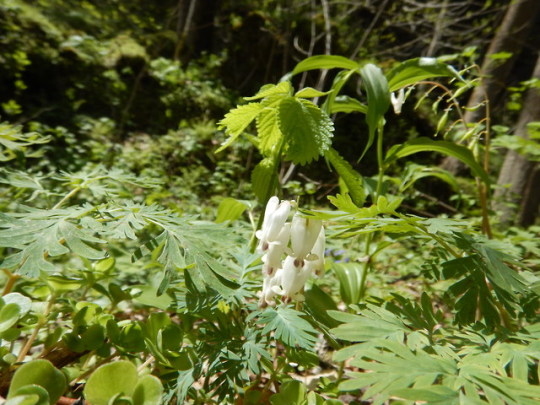

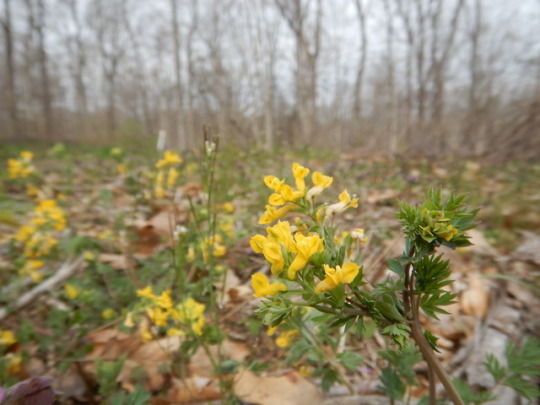



If you live in the Eastern North America you may already be aware of ant dispersal in action from classic examples such as Uvularia members as well as the two genera of ground dwelling Aristolochiaceae( Asarum and Hexastylis); but, it doesn’t seem to be as clear at first with the fumewort members of the poppy family( Papaveraceae). When looking at the inflated seed pods of any of these species one might assume they would follow trends like that in the genera Impatiens (touchmenot/jewel weed). After all it is a very thin wall and they are under what seems like a bit of turgor pressure during seed development. In truth most of their seed dispersal is also done by ants as well. You see, the seeds have a lipid and protein rich food coating that acts as an instigation device for ants to seek out. Seed dispersal symptoms that involve specific production of this yummy cap goes by a very easy to remember name: Elaios referring to olive oil film, and soma, referring to body, or rather an elaiosome. Elaiosome come in many different shapes and sizes, some coated seed can even be fully coated in this membrane to promote foraging preference over other sources. Besides elaisome mechanics this small grouping of poppies, the fumewort group also promotes success by having thickened bulbs packed full of a natural anti-freeze, they can produce an aerosol that burns the mucus membrane when pursued as food or grazed upon(this is how they got the name fumewort), and produce a somewhat noticeable odor. (that's right smell some squirrel corn when you get a chance next time).
Dicentra canadensis
Dicentra cucullaria
Corydalis flavula
#dicentra#corydalis#fumeworts sub family#papaveraceae#dicentra canadensis#dicentra cucullaria#corydalis flavula#botany#ecology#ants#seed dispersal#plantblr#wildflowers#ohio#nature#wildflower
10 notes
·
View notes
Photo


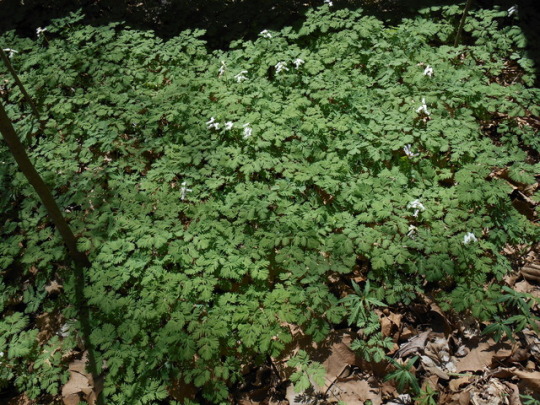
Garlic mustard pull highlights pt 1: downy yellow violet, squirrel corn galore
7 notes
·
View notes
Photo
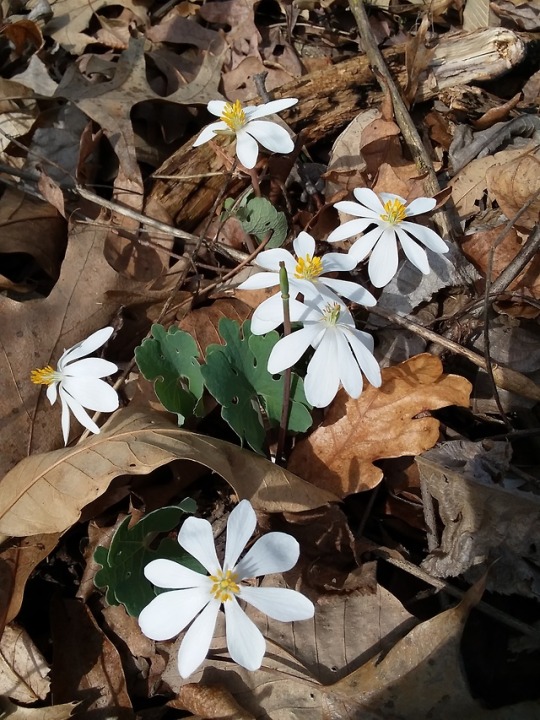


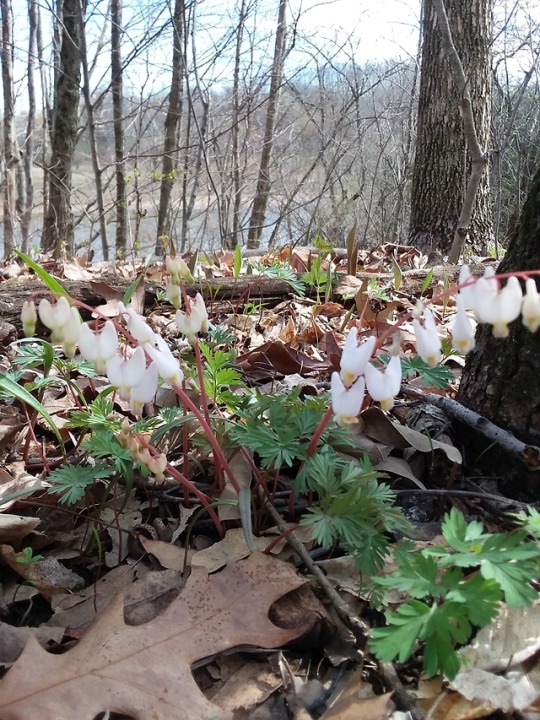





Spring Wildflowers
#wildflowers#spring#ephemeral wildflowers#bloodroot#sanguinaria canadensis#dutchman's breeches#dicentra cucullaria#trout lily#erythronium albidum#spring beauty#claytonia virginica#henbit#lamium amplexicaule#red admiral butterfly#vanessa atalanta
55 notes
·
View notes
Text
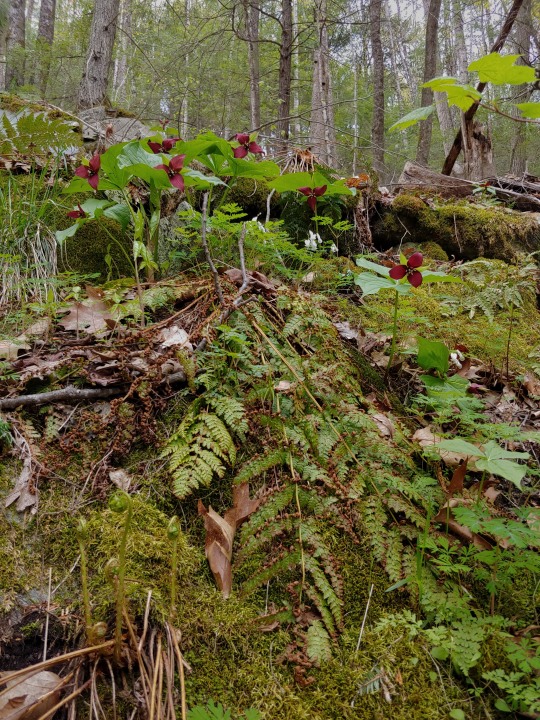


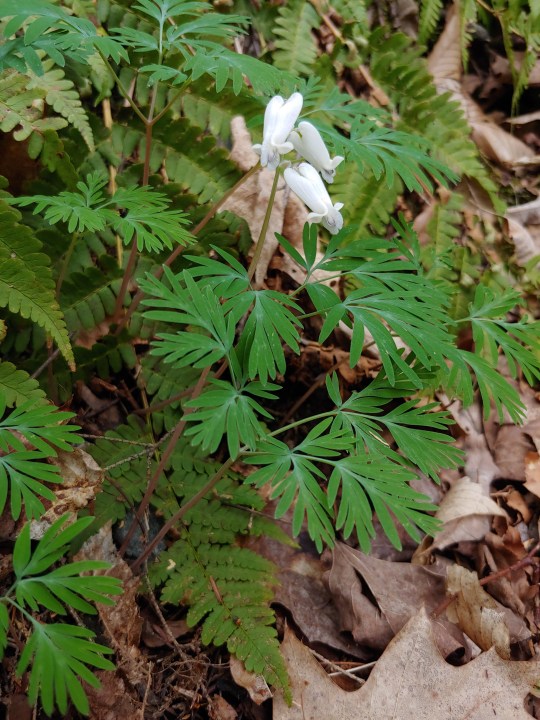


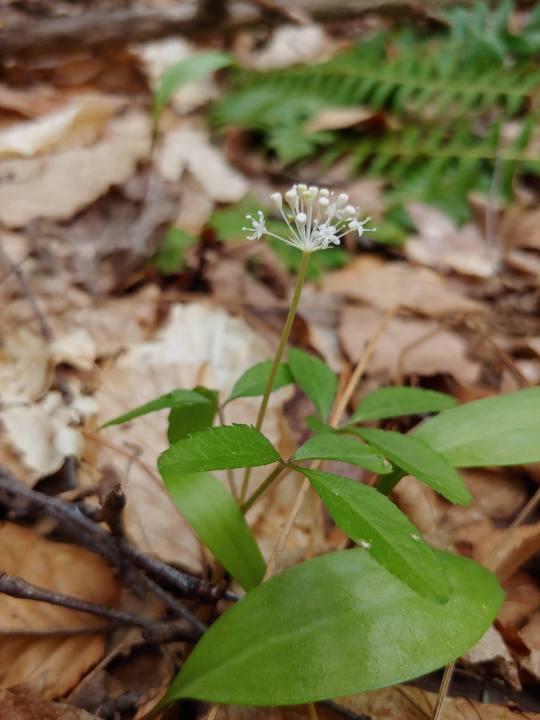

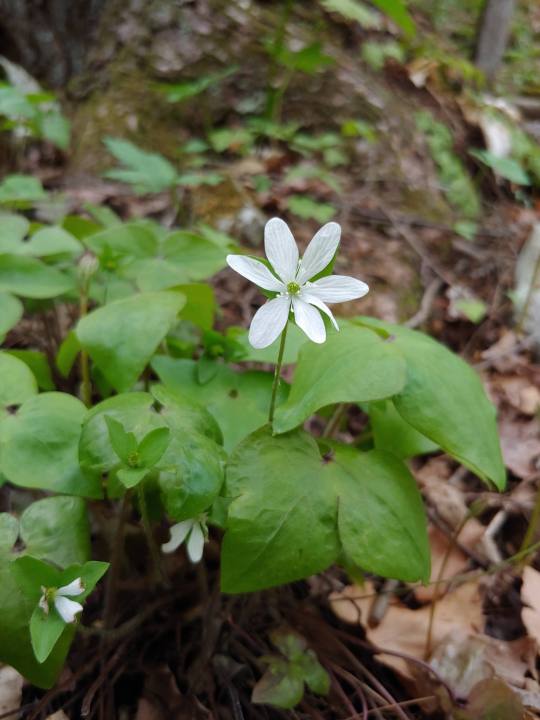
nrHello. I have some flower pictures for your viewing pleasure. It is officially spring ephemeral season and I unexpectedly came across so many on a hike yesterday!!! Here are a small selection of some of them
[1] Red trillium (Trillium erectum), squirrel corn (Dicentra canadensis), some ferns, growing on a hillside. There were so many flowers here. I don't think I've ever seen so many in such a small area.
[2] Wild ginger (Asarum canadense)!!! This is my favorite flower (look right at the base of the plant)! There was so much of it here!!! We still don't really know what pollinates them, although I believe a theory is that it is beetles and ants
[3] Dutchman's breeches (Dicentra cucullaria)
[4] Squirrel corn, a pretty good flower. I hadn't seen them in the wild before. 11/10.
[5] Long-spurred violet (Viola rostrata). Accurate name, very long spurs.
[6] uhhh definitely some sort of moss.
[7] Wild ginseng (Panax quinquefolia) 13/10 best scientific name, very fun to say. Unfortunately threatened/endangered in several states due to demand as a traditional medicinal plant. Actually this is dwarf ginseng (Panax trifolius)! Slightly less fun to say scienetific name.
[8] Jack-in-the-pulpit (Arisaema triphyllum). I also just learned that apparently this plant is also known as brown dragon! A very good name!
[9] Sharp-lobed hepatica (Hepatica acutiloba). For some reason the flowers on this plant always sort of annoyed me. But what good leaf shapes.
#this has been the most exciting thing to happen#I wasn't expecting so many#I have about 50 more photos of plants from yesterday#plant friends
4 notes
·
View notes
Photo
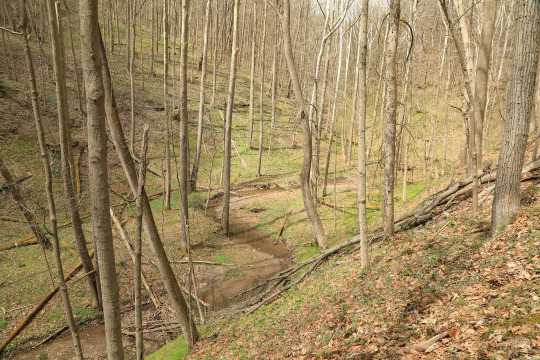
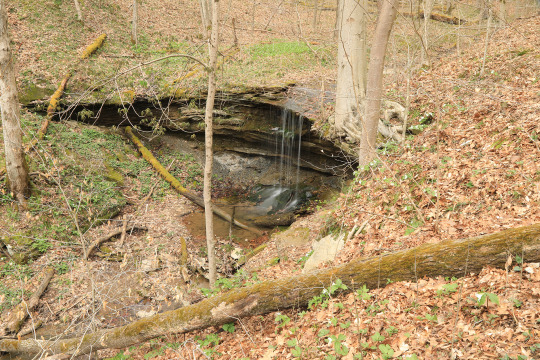



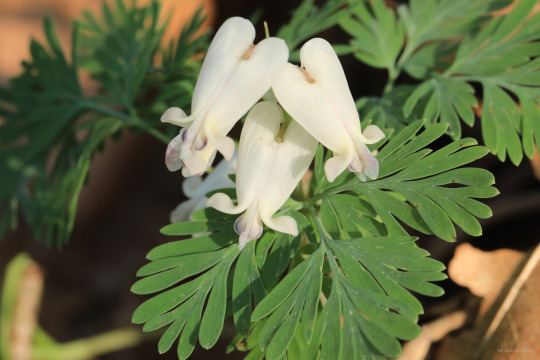


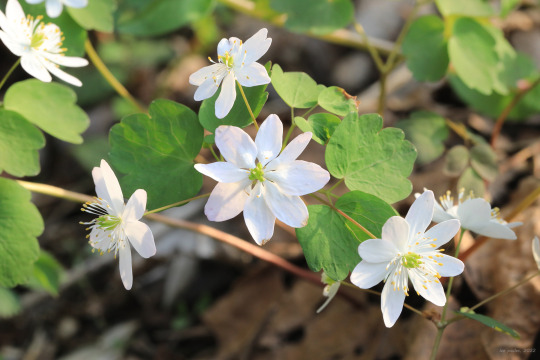

April in an Appalachian forest.
From top: ramp (Allium tricoccum); pin cherry (Prunus pensylvanica), also known as bird cherry and fire cherry; squirrel corn (Dicentra canadensis); yellow trout lily (Erythronium americanum); wild geranium (Geranium maculatum); rue anemone (Thalictrum thalictroides); and dwarf larkspur (Delphinium tricorne).
#appalachia#vandalia#west virginia#spring#flora#wildflowers#april#allium tricoccum#ramp#prunus pensylvanica#pin cherry#bird cherry#fire cherry#dicentra canadensis#squirrel corn#erythronium americanum#yellow trout lily#geranium maculatum#wild geranium#thalictrum thalictroides#rue anemone#delphinium tricorne#dwarf larkspur#mason-dixon historical park#mon river trail
184 notes
·
View notes